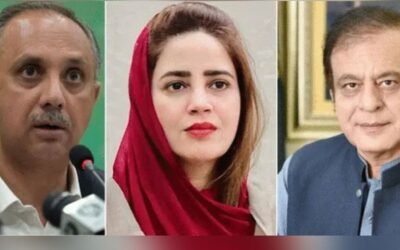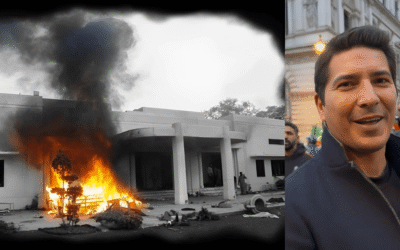The call for creating more provinces in Pakistan has returned to political debate. Proponents argue that smaller provinces would improve governance, reduce inequality, and bring decision-making closer to citizens. Critics warn it would deepen existing divisions in a country already struggling with ethnic, linguistic, and political polarization.
At present, Pakistan has four provinces Punjab, Sindh, Khyber Pakhtunkhwa, and Balochistan along with Gilgit-Baltistan and Islamabad Capital Territory. Some proposals suggest converting the existing 32 administrative divisions into provinces. Others call for a return to the 12 divisions that existed in West Pakistan at independence. The assumption is that new provinces will solve governance problems by devolving power and making administration more efficient. But experts caution that the issue is not so simple.
🚨 Bill tabled in Pakistani parliament to re-draw provincial boundaries and create 12 new provinces in Pakistan.
Proposed provinces include:
— Islamabad
— West Punjab
— Saraikistan
— Bahawalpur
— Potohar
— Karachi
— Sindh
— Mehran
— Balochistan
— Gwadar
— Khyber
— Hazara
📍…— South Asia Index (@SouthAsiaIndex) August 24, 2025
The Cost of New Provinces
Creating new provinces would not only redraw political maps but also carry heavy financial costs. Each province would need its own governor, chief minister, cabinet, high court, public service commission, police force, and civil secretariat. Setting up new assemblies, staff, and infrastructure would add billions to annual budgets.
A policy paper from the Economic Policy and Business Development group calculated that if Pakistan were divided into 12 provinces, each with an average population of 20 million, the state would face an “unmanageable financial burden.” The report estimated that the new administrative setup could consume up to 3 percent of GDP in recurring costs.
“Such extravagance is not acceptable in any case but in the present economic scenario it would be almost criminal,” said one retired civil servant at a recent discussion hosted by the Sustainable Development Policy Institute (SDPI).
نئی لیڈرشپ پیدا کرنے کا میکنیزم بالکل صفر!تمام لیڈران کیسے اقتدار تک پہنچے؟نئے لیڈر کیوں پیدا نہیں ہورہے؟میاں عامر محمود نے اصل وجہ بتا دی#NeoNews#APSUP#Pakistan_needs_more_provinces#Provinces#12Provinces pic.twitter.com/JAxy42ePHG
— Neo News (@NeoNewsUR) August 20, 2025
Resource Distribution and Identity Politics
Pakistan is already divided along provincial and ethnic lines. Punjabi, Sindhi, Pashtun, and Baloch identities shape politics and often fuel resentment over resource allocation. The National Finance Commission (NFC) Award distributes funds between the provinces, yet complaints of unequal distribution persist.
Punjab, with more than 127 million people, receives the largest share. But critics say smaller provinces like Balochistan, with a population of 14 million, still suffer from poor infrastructure and high poverty rates.
Provincial Poverty and Fund Allocation (2023 Estimates)
| Province | Population (millions) | Poverty Rate (%) | Funds Received (Rs billion) | Hospitals per 1m people |
| Punjab | 127 | 30 | 5,355 | 3 |
| Sindh | 58 | 45 | 3,100 | 8.5 |
| Khyber Pakhtunkhwa | 40 | 48 | 2,600 | 4 |
| Balochistan | 14 | 70 | 1,028 | 2 |
Supporters of new provinces argue that smaller units would ensure fairer use of budgets. Opponents counter that the demand is often driven by ethnic or political motives rather than administrative logic. “The risk is that we end up creating more fiefdoms for political elites rather than solving governance failures,” said PPP Senator (retd) Farhatullah Babar.
Lessons from India
Pakistan’s debate often cites India’s example, where the number of states has grown from 17 at independence to 28 today. But the comparison has limits. India’s state reorganization was driven by strong linguistic movements, some violent, which forced the government to act. In Pakistan, demands are less intense, though calls for a Seraiki province in South Punjab and a separate province for Urdu-speaking communities in Sindh have persisted.
India also created a States Reorganisation Commission in 1953, which worked for nearly two years before recommending changes. Pakistan has never formed such a commission. More importantly, Pakistan’s federal structure makes altering provincial boundaries harder. Any change requires a two-third majority in the concerned provincial assembly and in both houses of parliament. With current polarization, such consensus is unlikely.
You May Like To Read: Strengthening Public Trust in Democratic Institutions
Political Voices
At the SDPI roundtable on the “Political Economy of Administrative Restructuring,” participants expressed sharp differences.
Educationist Mian Muhammad Amir argued that Pakistan’s development is limited to five capitals Islamabad, Lahore, Karachi, Quetta, and Peshawar. He called for creating smaller provinces along division lines.
Former Punjab minister Mian Imran Massod supported the idea, saying the 18th Amendment already devolved power to provinces without harming the federation. “Similarly, more provinces may not damage the federation if they are created with consensus,” he said.
But others urged caution. “Instead of asking for new provinces, we need to empower local governments so that people can benefit directly,” said Babar. Article 140A of the Constitution calls for elected local bodies, but most provinces have avoided implementing it.
Public opinion is divided. In South Punjab, many residents say a separate province would address decades of neglect. “Look at our schools and hospitals. Lahore eats everything while we are left with nothing,” said Ahmad Khan, a farmer from Multan.
In Karachi, however, fears of division run deep. Many Sindhi nationalists see the demand for an Urdu-speaking province as an attempt to weaken Sindh’s identity. Similar tensions exist in Khyber Pakhtunkhwa, where Hindko-speaking groups have demanded recognition but Pashtun groups oppose carving up the province.
A Wrong Debate at the Wrong Time?
Pakistan faces serious challenges: a weak economy, resurgent terrorism, and growing regional insecurity. In such a climate, some argue that pushing for new provinces is a distraction.
“This sudden obsession is downright silly,” said a senior former diplomat. “The way forward is not more governors or assemblies, but better governance, professional civil service, and elected local governments.”
Pakistan’s population of 241.5 million is among the fastest-growing in the world. Punjab alone has more people than many countries, yet services remain stretched. The province has only three hospitals per million people, while Sindh has 8.5. Millions of children are out of school nationwide.
These problems demand urgent solutions. But experts stress that new provinces are not a magic fix. Strengthening local governments, reforming bureaucracy, and ensuring fair resource distribution may deliver more immediate results than redrawing boundaries.
As one economist at the SDPI event put it: “Provinces are not ends in themselves. They are tools for governance. If the tool is faulty, making more of it will not help.”
You May Like To Read: Strengthening Public Trust in Democratic Institutions







